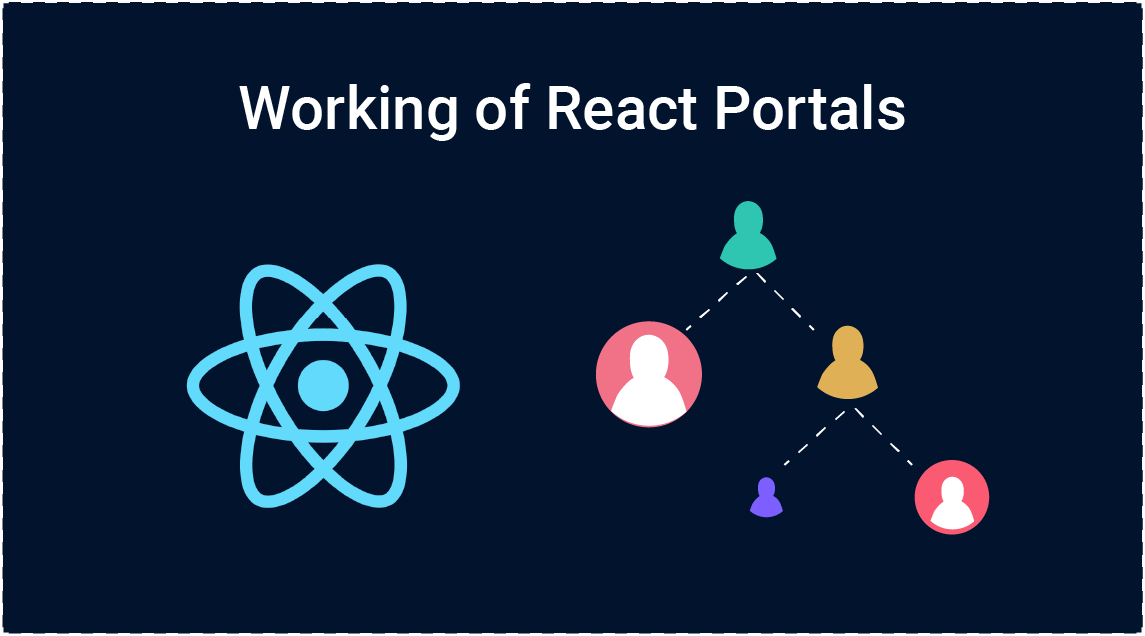The Power of React Portals for Advanced UI Composition

Whenever there is a need to create decent and valuable user interfaces (UIs), developers face many challenges. To manage these issues, developers need more than the standard methods of component rendering. React Portals offer a powerful solution to these challenges.
They provide a flexible way to manage UI composition, especially when dealing with elements like modals, tooltips, and other overlays that need to break out of the usual DOM hierarchy.
What are React Portals?
React Portals allow developers to render a component’s children into a different part of the DOM, outside the hierarchy of the parent component. Normally, React components are confined within the parent-child structure of the DOM.
However, Portals enable components to escape this structure, making it easier to manage complex UIs. For businesses looking to optimize their user interfaces, especially those with complex requirements, it’s essential to hire React developers with experience in advanced techniques like React Portals.
Benefits of Using React Portals
React Portals offer several advantages that make them a valuable tool in advanced UI composition:
- Separation of Concerns
Portals help maintain a clean and organized codebase by allowing components to render outside their parent DOM hierarchy. This separation makes it easier to manage and reason about complex UIs.
- Improved Accessibility
Portals have the ability to increase accessibility because they allow elements like modal dialogs and tooltips to be placed at the root level of the DOM. This makes sure that screen readers and other assistive technologies can easily detect and navigate these elements.
- Better Styling and Z-Index Management
It can be tricky and difficult to manage overlays like modals and dropdowns. Particularly when it comes to styling and z-index. With React Portals, you can render these elements outside the normal DOM flow and this makes it easier to control their stacking order as well as avoid common styling issues.
Read Also: Artificial Intelligence and Machine Learning (AI/ML): Transforming the Future of Technology
Practical Applications of React Portals
React Portals are particularly useful in scenarios where UI elements need to break free from their parent component’s DOM structure. Here are some common use cases:
- Modals and Dialogs
Modals often need to overlay the entire page, which can be challenging to manage without Portals. By rendering modals through a Portal, you can easily ensure they appear above all other content, regardless of their position in the component tree.
- Tooltips and Popovers
Tooltips often need to be positioned precisely relative to the target element, but they must also be able to overflow their parent component without getting clipped. Portals allow you to render tooltips in a way that they are not constrained by the parent element’s boundaries.
- Dropdown Menus
Dropdowns face the same challenges as tooltips and modals. They need to appear above other content and should not be constrained by the parent component’s dimensions. Portals provide a clean solution for managing dropdowns without disrupting the DOM structure.
Best Practices When Using React Portals
React Portals are no doubt powerful and valuable tools, so one needs to use them with care to avoid potential errors and mistakes. Here are some best practices to consider:
- Maintain Accessibility
Always ensure that your Portal-rendered components are accessible. This includes providing proper focus management for modals and ensuring that tooltips are announced by screen readers.
- Keep the DOM Clean
Use React Portals judiciously. Overusing them can lead to a cluttered DOM and make it difficult to maintain your application. Stick to scenarios where Portals genuinely solve a problem.
- Manage Event Bubbling
Events originating from Portal-rendered components will still bubble up to the parent component’s DOM tree. This can sometimes lead to unexpected behavior. Be mindful of event propagation and use techniques to manage it when necessary.
Conclusion
React Portals provide an elegant solution to the challenges of advanced UI composition. They empower developers to create dynamic and complex interfaces without compromising on code structure or maintainability.




